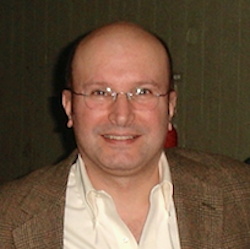The Hsp90 inhibitor used in this research was geldanamycin, an antitumor antibiotic used in chemotherapy. Findings suggest the drug may have the unintended consequence of decreasing motor neurons’ trophic pathways and thus putting those nerve cells at risk.
“The inhibition of Hsp90 as a therapeutic approach may require the development of inhibitors that are more selective so the cancer cells are targeted and healthy motor neurons are not,” said Franco, assistant professor of biochemistry and biophysics.
ALS, short for amyotrophic lateral sclerosis and also known as Lou Gehrig’s disease, is caused by the deterioration and death of motor neurons in the spinal cord. It is progressive, debilitating and fatal.
ALS was first identified in the late 1800s and gained international recognition in 1939 when it was diagnosed in a mysteriously declining Gehrig, ending the Hall of Fame baseball career of the New York Yankees first baseman. Known as the Iron Horse for his durability – he hadn’t missed a game in 15 seasons – Gehrig died two years later at age 37.
Joe Beckman, a distinguished professor of biochemistry and biophysics at OSU who has a long history as a leading ALS researcher, collaborated on this study, as did scientists from Cornell Medical College, the University of Central Florida, and the University of Alabama-Birmingham.
The National Institutes of Health and the ALS Association supported this research.






